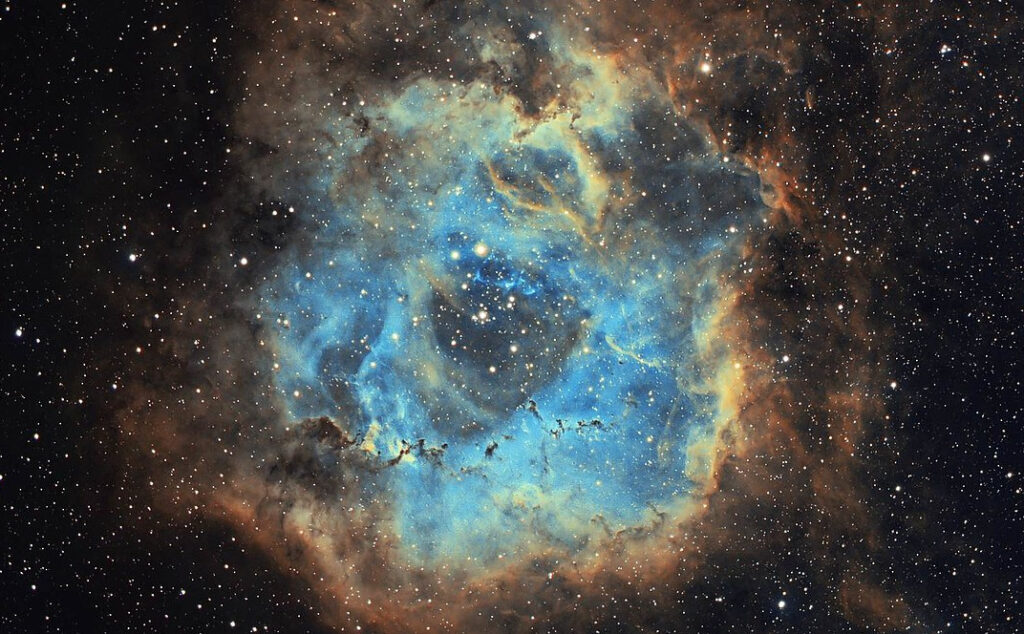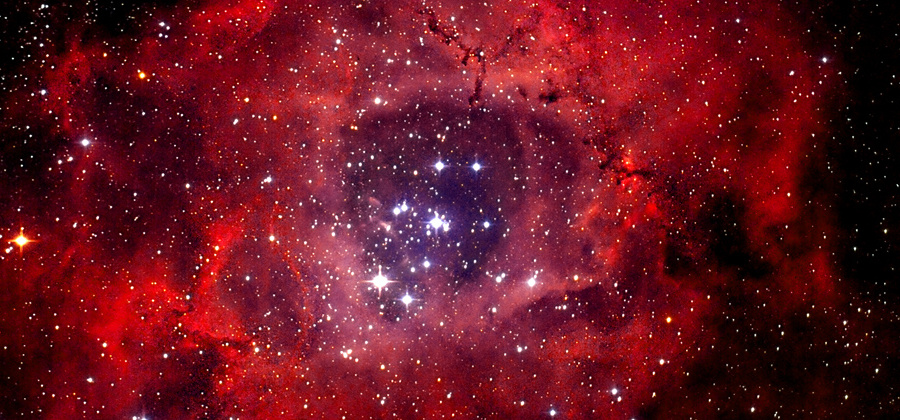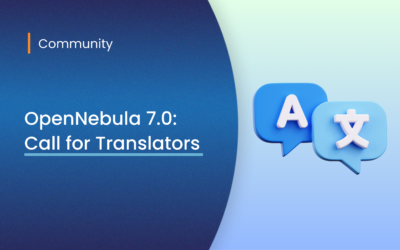🔭 Following our tradition, the new OpenNebula 6.8 has been codenamed after the beautiful Rosette Nebula. To mark this occasion, we’ve invited astrophysicist Dr Jose Manuel Martí to share his insights about this captivating cosmic wonder.
Behold the cosmic masterpiece known as the Rosette Nebula! This celestial spectacle, named for its stunning, flower-like appearance, graces the Monoceros constellation—an astronomical hotspot of nebulae and clusters embedded in the Milky Way’s galactic plane.
Situated nearly 5000 light-years away from Planet Earth, this interstellar emission nebula (referred to as an H II region) extends its artistic embrace over 100 light-years in diameter. It emerges from the northeastern fringes of the Rosette Molecular Cloud, where the magic of star formation unfolds.

The beauty of the Rosette Nebula lies not just in its vastness but in its mesmerizing patterns and colors. Intricate swirls of gas and dust create a tapestry of radiant hues, from deep magentas to glowing golds, painting a picture of cosmic elegance and grandeur. This living canvas captures the ongoing stellar birth and evolution within its gaseous expanse.
At the heart of this celestial artwork lies the star cluster NGC 2244—a stellar association of massive stars of spectral class O and B. These stellar powerhouses have such high surface temperatures that their emission peak is in the ultraviolet. This powerful radiation is the cause of the ionization of the nebula’s gas surrounding the stars. This interstellar gas then emits light of different colors, making it appear as though it’s wreathed in celestial flames, reminiscent of the brilliant sparks of a cosmic firework show.
While the relentless pressure of ultraviolet radiation from NGC 2244 OB stars gradually disperses the nebula over the next few million years, its legacy lives on, with its matter potentially contributing to the formation of new stars in the cosmic neighborhood. Witnessing the Rosette Nebula isn’t just a visual feast; it’s a journey through the dynamics of space and time on astrophysical scales. NASA’s meticulous observations have unraveled the intricate interplay of radiation, gasses, and dust, providing a front-row seat to the cosmic ballet taking place within this region of star formation.





Great announcement! Big kudos to astrophysicist Jose Manuel Martí!